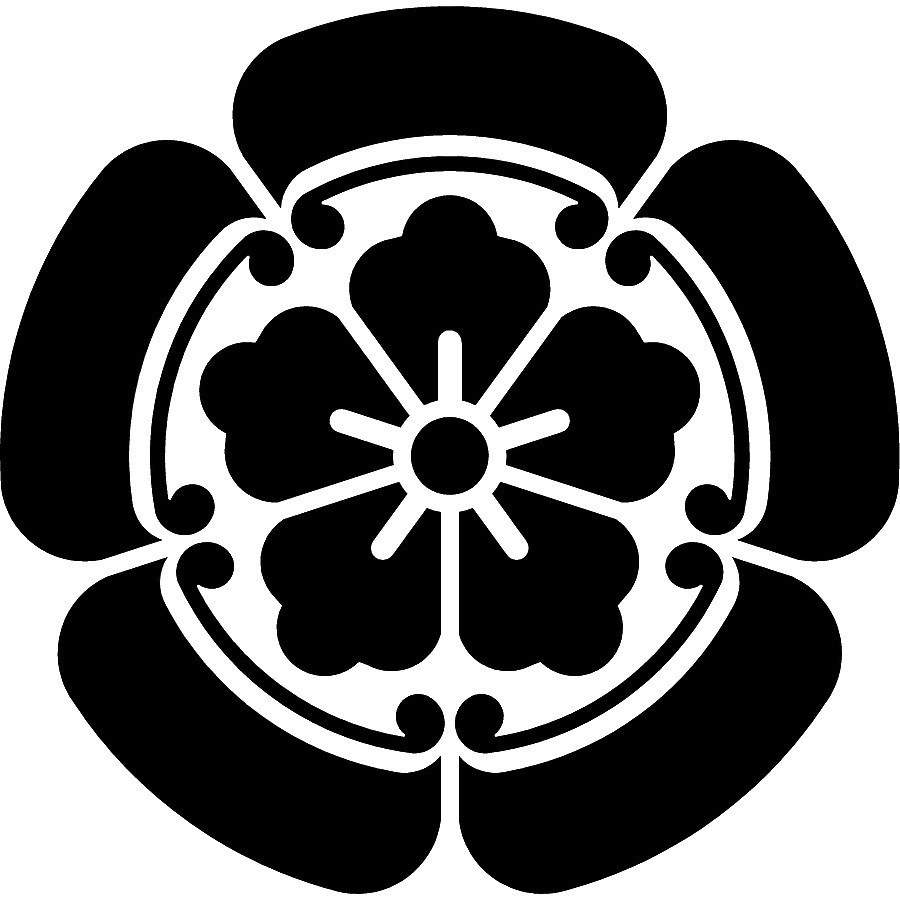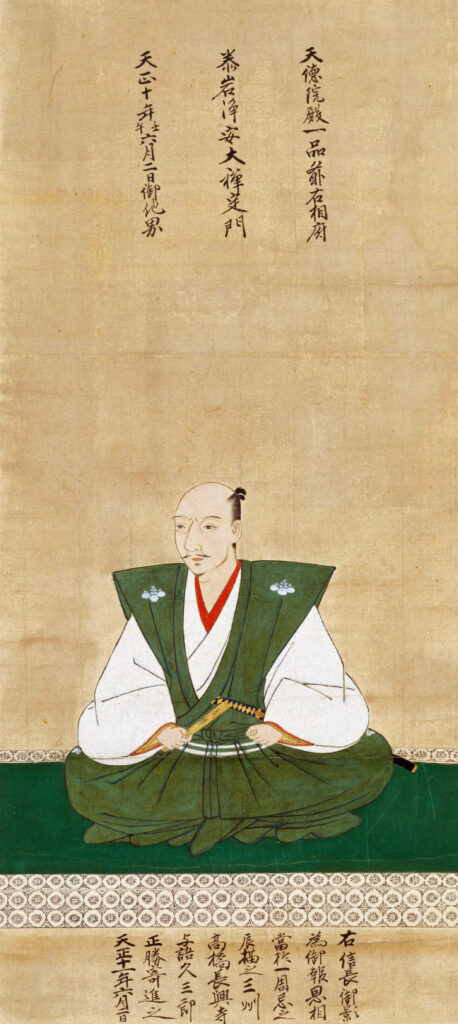
FEBRUARY 2022 (VOL. 1)

織田信長 ODA Nobunaga
1534 – 1582
The Unifier “BIG FOOL” from Owari
Increasing interest in historical persons
Who is your most favorite samurai? Who do you know at all? Recently, Japanese historical topics such as samurai, the history itself and/or swords have been drawing increasing attention both nationwide and worldwide. There could be some different triggers why people are interested in such things, but without any doubt, the backgrounds are popularity of Japanese “sub culture”. There are a bunch of manga and anime (and books, TV dramas or movies) which deal with Japanese historical figures. Many of them are translated into other languages too. So people in and out of Japan learn about histories and at the same time enjoy the stories through manga and anime. It’s also easier to understand and more fun than reading books. If surveys about most favorite historical persons are run, you see many different names in the ranking, but a part of them show up in the list almost every time. This time, we are introducing Nobunaga Oda (1534-1582), one of the most famous and popular samurai from the Sengoku period.

What did Nobunaga do?
Nobunaga, original name Kichihōshi, later Saburō, was born in 1534, in Owari (current Aichi Prefecture) as the second son of Nobihide Oda who was a skilled warrior, and spent much of his time fighting the samurai of Mikawa and Mino provinces. In 1546, after Genpuku (coming of age) he became the castle lord of Nakono-jo, and after his father Shinshu died in epidemic in 1551, Nobunaga succeeded as the head of family. After that, the Oda family who was Shugodai (representatives for Shugo, governor) chased Mr. Shiba, Shugo, a coup d’etat. Oda Nobunaga virtually took over Kiyosu castle which was the center of Owari. From this point on, Nobunaga who was from Shugodai Oda family, became “Oda Honke (head family).”
In 1560, at the battle of Okehazama, Nobunaga destroyed Imagawa Yoshimoto, and his name became known throughout the realm. Then, he had conquered Mino province within the next 10 years and began to aim at unifying the country. He marched on the capital and gained the support of the emperor. His own candidate was installed in the succession struggle for shogun. Having military force in his back, he could control the bakufu. At the battle of Anegawa, Nobunaga destroyed the Asai and Asakura’s united armies. In 1575, he defeated Takeda Katsuyori at the battle of Nagashino in Mikawa province. However, in June 1582, Akechi Mitsuhide, who was Nobunaga’s general, betrayed Nobunaga and made a surprise attack on him at the Honnoji Temple in Kyoto. Nobunaga killed himself with his own sword.
Personality
That Nobunaga was called “Owari no Ooutsuke (big fool from Owari)” when he was young since he behaved weirdly. A biography about Nobunaga, “Shinchou Kouki (信長公記)” written by Oota Gyuu-ichi, who was one of Oda Nobunaga’s officers (and later one of Hideyoshi Toyotomi’s officers) around 1610, tells what happened at his father’s funnel. His father, Nobuhide, died in 1551. Nobunaga came to his funeral late, and threw incense at the altar in disrespect. This drove his mentor, Hirate Masahide to commit seppuku out of shame. Except this, Nobunaga wore Yukatabira (which is usually worn as pajama from everyday life), tied his hair with colorful string without topknot, used a rope instead of a belt hanging several gourds, and waraji. His strange fashion let people think that he is strange or crazy. However, today, people interpret it that he was actually very smart and just pretended being foolish.
Very often it is said that Nobunaga loses his temper very quickly and was very merciless like some episodes show. There’s a saying he might have said what to do if a mockingbird refused to sing for him: he would kill it. When he set to Enryaku-ji Temple on Mt. Hiei, around 4,000 people were killed including women and children. At the Sieges of Nagashima, there were more than 20,000 casualties.
Those who do not obey are excusedly and completely eliminated, regardless of how they are, whether they are monks or women or children, and are conducted as extremely devilish people.
His nervousness and suspicion were strong, and he responded particularly violently to acts such as betrayal, so his younger brother, aunt, etc. seemed to have an immoral character that would take mercilessly life inside him.
On the other hand, there are some episodes that tell his thoughtfulness for the weak. According to Shinchou Kouki, Nobunaga met a disabled person called “Monkey in the mountain” who lived in the mountain as a beggar along the road when he was walking in the middle of the mountain at the border between Mino and Omi. Every time seeing this person, he comes to think deeply and let the people of the village gather 20 cotton rolls to exchange them with cash so that the “Monkey” can build a house. Nobunaga also told the people to give food to “Monkey”.
Nobunaga might have held great compassion and sought to be of service to others and been capable of giving comfort to those in need.
Also, it’s told often that he may have been pretty open for new things. He actively tried to incorporate European culture. The reason why he tried to adopt Christianity is for ex., import of European techniques and goods in “Nanban trade” (Southern barbarian trade), bringing Christian missionaries, and keeping a part of Buddhists (such as the uprising of Ikkou-shu) in check. In the Nanban trade, many things such as guns, western clothes (hats, leather jackets and boots), oil paintings, globes, and western instruments (organ violas). have been introduced to Japan. It can be said that the Christian tradition helped his dream of unity in the Japan.
He was merciless and unforgiving to the opponents, but friendly and kind to the vulnerable members of society, and willingly adopted new things.
Cleaning the Tombstones While Weeping
Rikyu had lost his father and grandfather at the same time in his late teens. Sadly, Rikyu’s family was too poor that they didn’t have enough money to hold a funeral, so Rikyu depressingly cleaned their tombstones instead. This was probably the worst point of Rikyu’s life; however, Rikyu didn’t skip tea ceremony classes. Rikyu loved learning about the tea ceremony and enjoyed it so much, and he also had a talent for business. He made a lot of money by selling tea ceremony equipment. When Rikyu was in his 40s, Oda Nobunaga, who had great power in Japan at the time, took control of the city where Rikyu lived. One day, Nobunaga met Rikyu, and he decided to hire him as his servant because Nobunaga liked tea. For Rikyu, it was a chance to escape his poor life by doing what he loved, serving tea.
Adaptations in TV, Films and Manga
Due to his charisma, he has been featured in a lot of media like movies, TV-series, manga or anime. One of the many works that increased attention to him is “Nobunaga Concerto” series which was released for a TV animation, live-action TV drama and live-action film at all such times, based on a manga series by Ayumi Ishii. These works were very successful. People could have fun by watching and at the same time learn Japanese history.
What made Nobunaga worldwide famous and popular is a game series “Nobunaga’s Ambition” produced by Japanese video game developer Koei. This roll-playing simulation game series, launched for PlayStation 4, Switch, and PC in Japan in November 2017, for iOS in January 2018, and is due out for Android in 2018, has shipped more than 10 million copies worldwide as the publisher Koei Tecmo announced last year.
If you are interested in Japanese history, knowing about Oda Nobunaga is a must!
.
.
.




